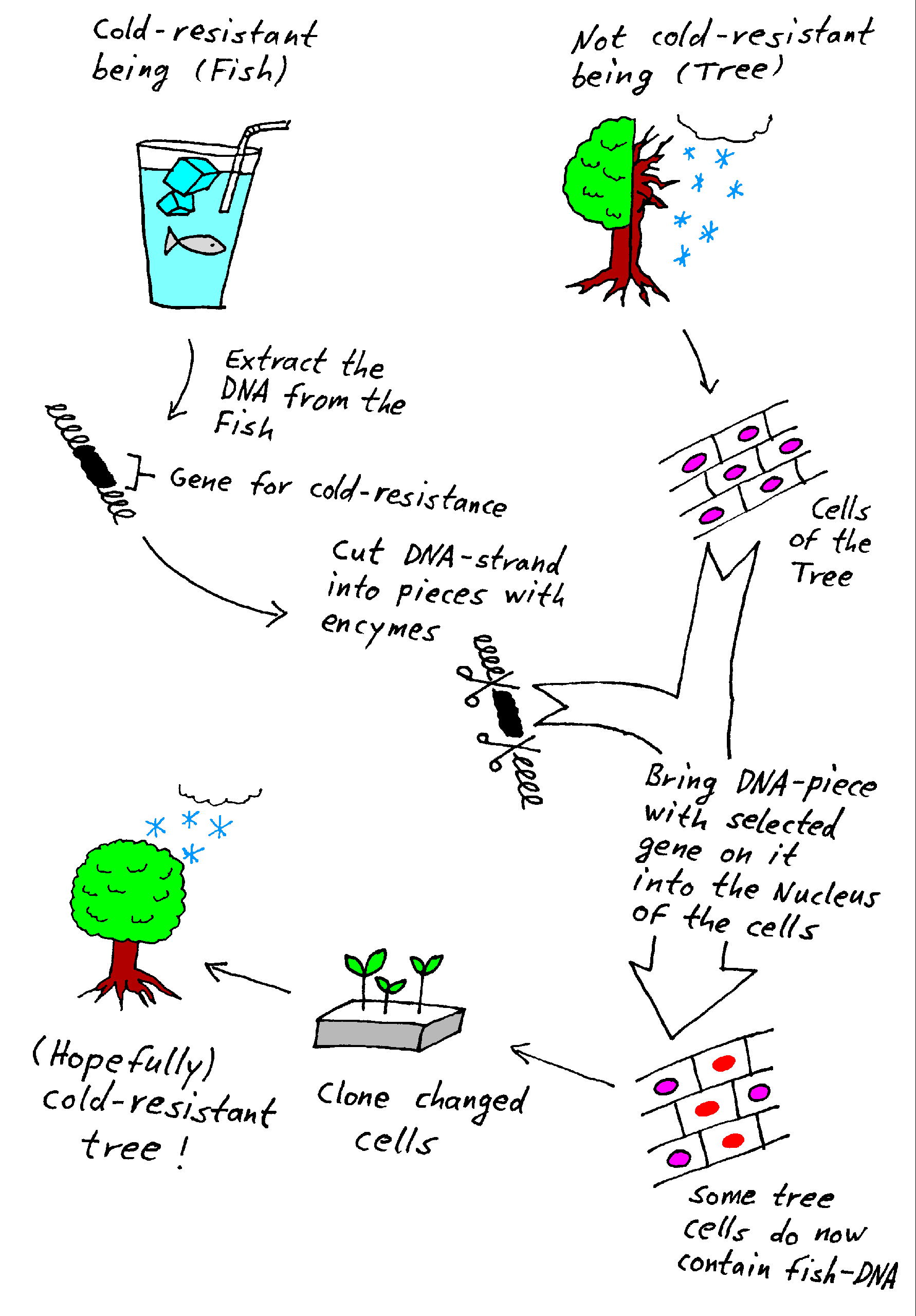

The typical situation where your typical technocrat wants to apply gene technology involves two organisms. One of them has a special feature that the technocrat wants to see on the other one. For example, consider a tree and a fish. The tree is not cold resistant but the fish is. Now the technocrat wants to see a cold resistant tree. He extracts the DNA from the cells of the fish and tries to locate the gene for cold resistance. That's the hard part. After he has identified the gene he cuts the DNA into pieces using encymes. After this is done, the piece with the correct gene must be brought into the nucleus of the tree cells. There are several methods to perform this and one is worse than the other! More about this later. After the gene transfer, the changed cells can be cloned (duplicated) and be used to hatch a new organism, in this case a full-size, (hopefully) cold-resistant tree.
Remember: Gene technology allows to transfer features between different species!
But...
There is still too little known about genes and DNA, so the manipulation is still a "Trial and Error" process (See the chapter about DNA and genes). One big problem is the question how the DNA piece can be brought into the nucleus of the target cell. Sometimes viruses are used as a "gene ferry" - a potentially dangerous method. Another method involves a very fine needle and a very calm hand of the manipulating scientist! The third attempt, the "gene gun" needs small gold particles covered with DNA which are shot directly into the nucleus. Please try to open your front door with a bazooka and you will get an idea how accurate this method is - sometimes the cells are destroyed completely! A variation of this brute force method involves magnetic particles on the "cannonballs". This allows to identify the cells which survived this procedure easily. Convenient, isn't it?

Due to the fantastic accuracy of the transfer process it can't be known where on the target DNA the new gene will be built in. Neither can we know what else will be damaged during the transfer, nor can we know how the target organism reacts with the new gene. Living organisms are a little more than gene construction sets, but I doubt that our typical technocrat will agree.
By the way, don't think that it is an unusal example to transfer genes from a fish to a tree! These fish-trees are not only possible, they are already built and set free in Scandinavia!
Final Conclusion: Everything that can be done, WILL be done!